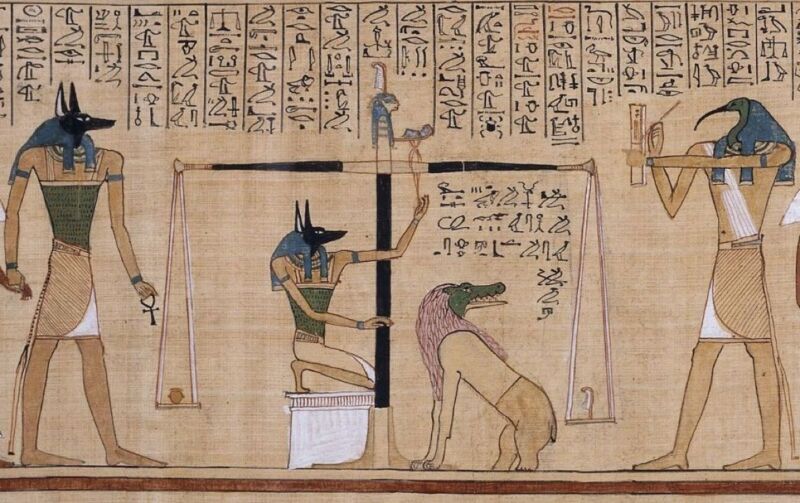
Enlarge / Sample illustration from an Egyptian Book of the Dead—not the newly discovered papyrus—depicting the "weighing of the heart." (credit: Public domain)
Archaeologists have confirmed that a papyrus scroll discovered at the Saqquara necropolis site near Cairo last year does indeed contain texts from the Egyptian Book of the Dead—the first time a complete papyrus has been found in a century, according to Mostafa Waziri, secretary-general of the Supreme Council of Antiquities in Egypt. The scroll has been dubbed the "Waziri papyrus." It is currently being translated into Arabic.
Fans of the 1999 film The Mummy know that the Egyptian Book of the Dead plays a key role in bringing the cursed high priest Imhotep back to terrorize the living. The reality is naturally quite different: notably, there is not one magical copy of the Book of the Dead, as depicted in the film; there were many versions over the centuries, all unique, with the choice of spells often tailored to the specific needs of deceased royals and (later) high-ranking members of Egyptian society.
These "books" were actually collections of funerary texts and spells to help the deceased on their journey through the underworld (Duat)—not to bring people back from the dead—and they are not holy texts like the Bible or Qur-an. They were originally painted onto objects or written on the walls of burial chambers. Over time, illustrations were added and spells were also inscribed on the interior of coffins or the linen shrouds used to wrap the deceased.
No comments:
Post a Comment